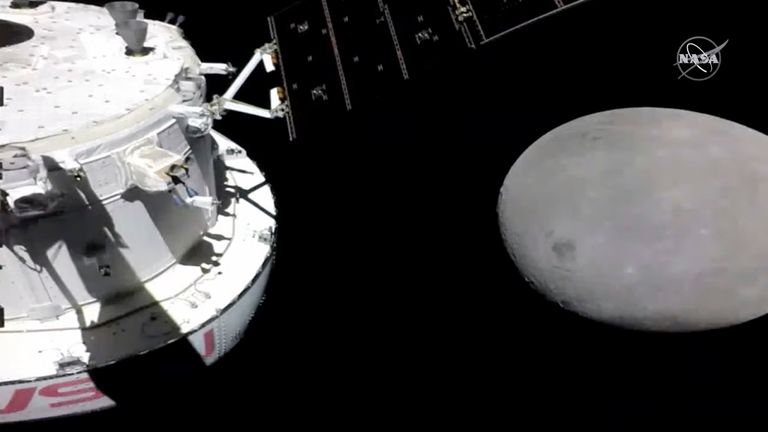NASA’s Orion spacecraft will return to Earth in under an hour after a 25-day trip around the moon.
The uncrewed capsule, designed to carry astronauts, will touch down in the Pacific near Guadalupe Island at 5.39pm UK time.
splash is the last hurdle Successful Demonstration Mission For Orion. The spacecraft could take humans to the moon for the next mission – scheduled for 2024.
The spacecraft is heading toward Earth at 25,000 miles per hour. When it enters the atmosphere, it will slow down to around 325 mph before deploying 11 parachutes to slow it down to less than 20 mph.
The capsule launched from Earth on November 16 aboard NASA’s Space Launch System (SLS) rocket as part of the Artemis-1 mission, ushering in a new era of lunar exploration with humans returning to the Moon.
nine days later it made history 270,000 miles across the globe – has flown the farthest of any spacecraft designed to carry humans.
It has now added over 1.4 million miles.
Sean the Sheep’s Space Journey
There may be no humans on this mission, but returning from the long trip are furry astronauts Snoopy and Shaun the sheep, along with three mannequin astronauts — dubbed Commander Monikin Campos, Helga and Zohar.
The recovery team will pull the capsule from the ocean.
read more:
A $93 billion space mission
Why We Haven’t Encountered Intelligent Life Yet—According to NASA
‘Planet killer’ asteroid found hiding in bright light
While the Artemis-1 mission has always been about testing systems, the Artemis II flight test will be NASA’s first mission to orbit the moon with astronauts.
If successful, Artemis II will pave the way for the first woman and next man to land on the moon as part of Artemis III.
The last manned mission to the moon was Apollo 17 in December 1972.
The Artemis mission is part of NASA’s long-term plan to build a space station called the Lunar Gateway Astronauts will be able to live and work.
